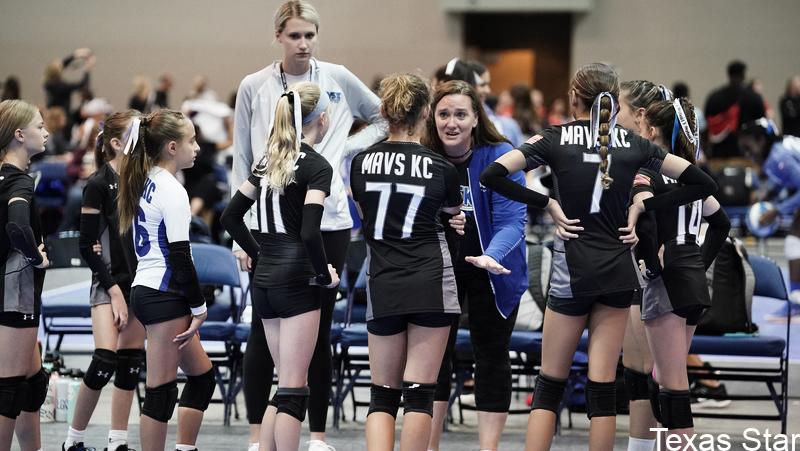
In coaching, the only constant is change. Nearly every coach will eventually hit a point in a season or school year where change is coming or needed.
According to board-certified family physician and TrueSport Expert Deborah Gilboa, MD, “If you want to lead through change, you’re going to have to be mission-focused, you’re going to have to lean on empathy even when you disagree, and you’re going to have to have good boundaries about what behaviors, tone of voice, and timing are acceptable to you,” she says.
Here, Gilboa shares more advice on how you as a coach can help empower your athletes to be true leaders on the team, and navigate big and small changes.
Understand Your Role
Whether you think about your role as coach or the role that your team captain plays, Gilboa points out that leadership is rarely needed in the absence of change. When you ask an athete to run the team through the usual warmup drills because you need to handle something else, you’re not asking them to be a leader, you’re asking them to serve as your proxy. Gilboa explains that leadership is about humans working to make fundamental change to the status quo. This can be on a micro level—changing the warmup drills to something different—or on a macro level—fighting to change a school policy.
Bring Students to the Table
If you want athletes to support change and become true leaders, bring them to the table. That includes having conversations with your team regarding changes in school or club policies, and bringing an athlete representative to leadership meetings.
“This is probably one of the most powerful ways to start bringing change to a team,” Gilboa says. “When talking about leadership with a Gen Z team, which is what all coaches are doing now, it’s important to understand that this generation has been taught to advocate for themselves, and they are offended when people try to make decisions for them without their representation. You don’t have to turn decision-making into a democracy by giving them a deciding vote. However, you do need to give them a voice. Bringing them to the table does that.”
Set Boundaries and Expectations
As Gilboa said, you’re not necessarily required to give your team full autonomy. Set expectations ahead of time.
If, for example, you bring an athlete representative to a coaches’ meeting at the beginning of the season to discuss a new policy, you can tell your athlete that they will not have the opportunity to speak, or if they will have a chance to speak, they will only have a certain amount of time.
“Let the (athletes) know when they’re going to have a vote, and when they’re just going to have a voice. For example, I often say to my kids, ‘This is not your decision, but I’m interested in your opinion.’”
You can also set expectations around solo-interactions: if an athlete has a problem with a policy, for example, they should feel comfortable coming to you and expressing their feelings, but they also should know what actions are appropriate.
Define Your Team’s Mission
It’s critical for leaders who want to affect change to know exactly what they stand for and why.
“You and your team need to get clear: figure out where you stand on an issue and then figure out how to express it to other people,” Gilboa says. “What’s the mission of your team? When you look at your mission, you’ll know if any specific change fits or not. For example, imagine you receive a call this month from a parent of a child who wants to do orchestra, but it conflicts with some practices. Look at your mission: Do we value the development of the whole child? Do we support mental wellness and developing an identity outside of sport? Having those values clearly established makes it easy to make decisions about changing policies or long-standing rules.”
Show the Action Plan
Change—especially large-scale, systemic change—is hard. It often takes incredibly arduous work to make even minor progress when fighting against the status quo. Making sure your team is aware of the blueprint for success is important. Gilboa explains that after making a decision, it’s important to share next steps with the team—and also the opportunity cost of change.
“Change is rarely as simple as making the initial decision,” she says.
There might be immediate and/or long-term consequences for individuals or the team as a whole.
Encourage Empathetic Communication
There is room for dissension in the ranks.
“If you are going to be a leader that encourages change, one of the crucial leadership strategies is empathy without trying to fix everything immediately,” Gilboa says. “You cannot see people’s frustration or disappointment as a referendum on your leadership. If you see it that way, then you’re not going to be able to hear how they’re really feeling. And then, you’re not leading, you’re just bossing. Understand that this current generation of athletes engages through disagreement. They don’t see disagreeing with someone as a sign of disrespect; to them, it’s engagement. This is so important for older coaches to understand. This dialogue is valuable.”
Takeaway
Being a mission-driven team helps keep decision-making simple, since every decision or change will be run through the lens of what matters to your team, whether that’s winning championships or focusing on wellness. If you’re a coach trying to make change happen in your team, your school, your district, or your state, it’s important to be clear with athletes about what’s at stake. Bring an athlete representative to the table, and while your athletes don’t always need to be able to choose what’s best for the team, they should have a voice when it comes to making the tough decisions.
